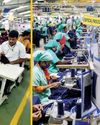Bihar has banned the consumption and sale of alcohol. This is noteworthy because the state has banned alcohol at a time when many other states earn a sizeable revenue from excise out of the sale of alcohol. In an exclusive interview with BE’s Kishore Kumar Biswas, Vijendra Prasad Yadav, Minister in Charge, Power, Excise, State Government of Bihar, spoke about the success of banning alcohol and the challenges the government faced.

Q. Why did you take such a seemingly unpopular decision like banning the consumption and sale of alcohol in Bihar?
A. Please remember the end of 2014 when our Chief Minister, Nitish Kumar addressed a gathering where a lot of women were present. In that meeting the women requested him to ban the consumption of alcohol in the state. Alcoholism had been causing harm to the rural poor. In a large number of families, a lot of money is diverted from livelihood needs to alcohol. The drunken members also destroy family lives in different ways. You know that a large number of people in Bihar live below the poverty line (BPL). Nitish Kumarji decided if the party would win the state election, alcohol consumption and sale would be banned in the state. We did this when we were voted to form the government.
We banned it first in the rural areas and within a week there was big gathering of women in Patna demanding a similar ban in urban areas. So, we went for the complete ban of alcohol in the state. That is why it can be said that it was not an unpopular step.
Q. Can one state successfully ban alcohol consumption if other states around it don't?
Esta historia es de la edición August 16 - 31, 2018 de BUSINESS ECONOMICS.
Comience su prueba gratuita de Magzter GOLD de 7 días para acceder a miles de historias premium seleccionadas y a más de 9,000 revistas y periódicos.
Ya eres suscriptor ? Conectar
Esta historia es de la edición August 16 - 31, 2018 de BUSINESS ECONOMICS.
Comience su prueba gratuita de Magzter GOLD de 7 días para acceder a miles de historias premium seleccionadas y a más de 9,000 revistas y periódicos.
Ya eres suscriptor? Conectar

Bank of Baroda, Kolkata Zone organised Mega Kisan Melas in West Bengal
Bank of Baroda (BOB) organised Mega Kisan Mela at Konkalitala in Birbhum District of West Bengal on November 18, 2024 as a part of the 7th Edition of the Baroda Kisan Pakhwada (BKP).

Time-Bound Disposal of Cases to Expedite the Delivery of Justice and affordabe by all in India
The delay in the disposal of cases in Indian courts remains a significant hurdle to the nation's progress.

Dev Deepawali: A grand celebration of light, spirituality, and culture in Varanasi
The holy city of Varanasi, often regarded as India's spiritual and cultural heart, came alive with the splendor of Dev Deepawali on the sacred day of Kartik Purnima.

The life of Job 'Ye judge not the judgment of God' - Jesus Christ
The Holy Bible reveals through the life of Job how the Lord tests the righteous and that faith helps one to overcome life's adversities.

India has the highest potential for the garment industry, only a conducive government policy is required.
India's textile industry is poised for remarkable growth, with expectations to double its contribution to the GDP within the next six to seven years.

Global Public Debt may be worse than it appears, warns IMF
Global Public Debt Set to Exceed $100 Trillion, Warns IMF

The economic consequences of Trump's Presidency: A global perspective
One of the key economic factors contributing to the Democrats' loss in the US elections was the significant rise in inflation, which was initially triggered by the COVID-19 pandemic and exacerbated by the Russia-Ukraine war.

Challenges and Successes in West Bengal's Education Sector: A Comprehensive Overview
The education system in West Bengal, particularly in districts, villages, slums, and government institutions, reflects a blend of progress and ongoing challenges.

What India can expect from Trump's return
I may be too early to predict how Donald Trump's second term as president will impact the global oil market.

Stocks Surge Following Donald Trump's Election as 47th President of the USA
Stocks soared following the election of Donald Trump as the 47th President of the United States. Investors anticipated that the Information Technology (IT) sector would benefit from lower corporate taxes under the Republican regime, with IT stocks leading the rally.